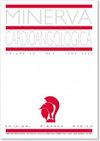COVID-19患者早期与晚期气管插管:一场考虑心肺相互作用的正反辩论。
Q3 Medicine
引用次数: 25
摘要
COVID-19合并急性呼吸窘迫综合征患者气管插管和有创通气的最佳时机尚不清楚。在许多医疗条件下,无创通气是一种挽救生命的技术,但由于延长无创通气时间和延迟插管可能有害,因此在ARDS患者中使用无创通气存在争议。在呼吸道大流行期间,重症监护病床和呼吸机的短缺可能导致许多医院广泛使用早期无创通气,但对于严重双侧肺炎和严重自发通气增加的患者,哪种是最佳通气方式存在争议。此外,对于任何用于供氧的设备来说,病毒传播给医护人员和其他住院病人都是一个问题。即使保护性机械通气是目前管理急性呼吸窘迫综合征的金标准,气管插管也不是没有风险,并且与谵妄、血流动力学不稳定、固定和重症监护后综合征有关。有创通气和无创通气都有其优点和局限性,当COVID-19-ARDS患者需要我们关注时,应仔细考虑这些优点和局限性。在缺乏有力证据的情况下,我们在这篇综述中强调了这两种不同方法的所有优点和缺点。本文章由计算机程序翻译,如有差异,请以英文原文为准。
Early versus late tracheal intubation in COVID-19 patients: a pro-con debate also considering heart-lung interactions.
The best timing of orotracheal intubation and invasive ventilation in COVID-19 patients with acute respiratory distress syndrome is unknown. The use of non-invasive ventilation, a life-saving technique in many medical conditions, is debated in patients with ARDS since prolonged NIV and delayed intubation may be harmful. Shortage of intensive care beds and ventilators during a respiratory pandemic can trigger a widespread use of early non-invasive ventilation in many hospitals but which is the best way to ventilate patients with severe bilateral pneumonia and severely increased spontaneous ventilation is controversial. Moreover, viral spreading to health-care workers and other hospitalized patients is an issue for any device used to administer oxygen. Even if protective mechanical ventilation is currently the gold standard for the management of acute respiratory distress syndrome, tracheal intubation is not without risks and is associated with delirium, hemodynamic instability, immobilization and post intensive care syndrome. Both invasive and non-invasive ventilation are associated with advantages and limitations that should be carefully considered when patients with COVID-19-ARDS need our attention. In the absence of strong evidence , in this review we highlight all the pro and con of these two different approaches.
求助全文
通过发布文献求助,成功后即可免费获取论文全文。
去求助
来源期刊

Minerva cardioangiologica
CARDIAC & CARDIOVASCULAR SYSTEMS-
CiteScore
1.60
自引率
0.00%
发文量
0
审稿时长
>12 weeks
期刊介绍:
A Journal on Heart and Vascular Diseases.
 求助内容:
求助内容: 应助结果提醒方式:
应助结果提醒方式:


